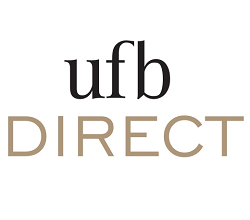Having extra money saved can make a big difference in your financial health. You never know when an unexpected bill will come your way, and having the funds needed to pay it can reduce your stress and allow you to avoid debt.
What if you can only afford to save $1,000? That’s great! Find out why having $1,000 in your savings account is much better than zero.
Is $1,000 enough to prepare for emergencies?
You’ve likely heard financial experts recommend having an emergency fund. That’s solid advice. Having extra money in the bank can make it easier to navigate stressful situations like a surprise medical bill or unexpectedly needing to replace your refrigerator.
Without money in the bank, you may have to resort to using a credit card to cover unplanned expenses, which could put you at risk of racking up credit card debt — especially if you’re already in a difficult financial situation.
Our Picks for the Best High-Yield Savings Accounts of 2024
|
American Express® High Yield Savings APY 4.25%
|
APY 4.25%
|
Min. to earn $1 |
|
UFB Portfolio Savings Account 
APY 5.15%
|
APY 5.15%
|
Min. to earn $0 |
|
CIT Platinum Savings 
APY 5.00% APY for balances of $5,000 or more
Min. to earn $100 to open account, $5,000 for max APY
|
APY 5.00% APY for balances of $5,000 or more
|
Min. to earn $100 to open account, $5,000 for max APY |
But what if you only have $1,000 saved up? Is that enough to protect yourself financially? First, if you have $1,000 in your emergency fund, that’s fantastic news. It takes a lot of hard work to save that much money, and you should be proud of yourself.
While $1,000 is likely not enough to cover several months of living expenses, it should be enough to cover an unexpected expense or bill that comes your way. Having $1,000 in your savings account puts you at an advantage and can give you greater peace of mind.
Whether you have $100, $500, or $1,000 saved, it’s important to remember that any money saved is a huge win for your finances. A $1,000 savings fund is a great place to start. Remember, you can always continue saving, so you’re even more prepared.
Do this to boost your emergency fund balance faster
If you’re looking for a way to boost your $1,000 emergency fund, you’re in the right place. Making regular contributions to your savings account is the best strategy. But that requires you to remember to set aside extra cash. Do you sometimes forget to save? You’re not alone.
I recommend automating the savings process. You can set up automatic transfers so money is transferred from your checking account to your savings account as often as you’d like. Doing this can save you time and ensure you stay on top of your savings goals.
One more tip: Keep your extra cash in a bank account that earns interest. One popular option is a high-yield savings account. These accounts are earning APYs of 4.00% or more. As your money sits in the bank, you can get rewarded by earning interest.
No savings goal is too small
If you’re reading this and have yet to establish an emergency fund, don’t fret. It’s never too late to start saving, and it’s OK to begin with a small goal. Whether you want to save $300, $500, $1,000, or more, the most important part is that you’re taking steps to prepare financially.
These savings accounts are FDIC insured and could earn you more than 10x your bank
Many people are missing out on guaranteed returns as their money languishes in a big bank savings account earning next to no interest. Our picks of the best online savings accounts could earn you more than 10x the national average savings account rate. Click here to uncover the best-in-class accounts that landed a spot on our short list of the best savings accounts for 2024.

